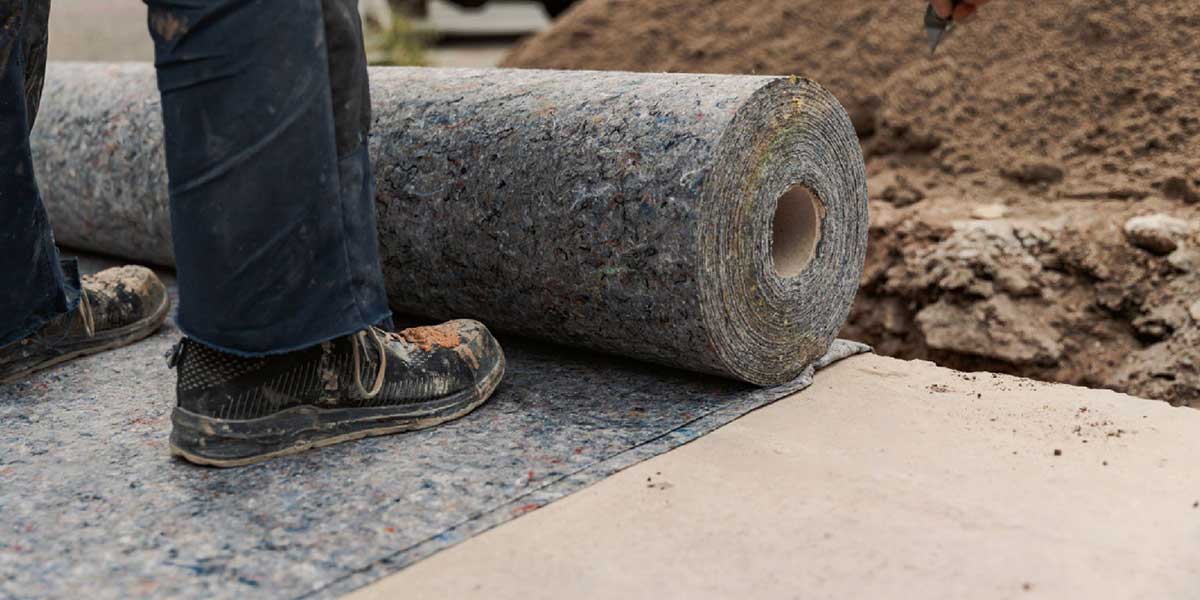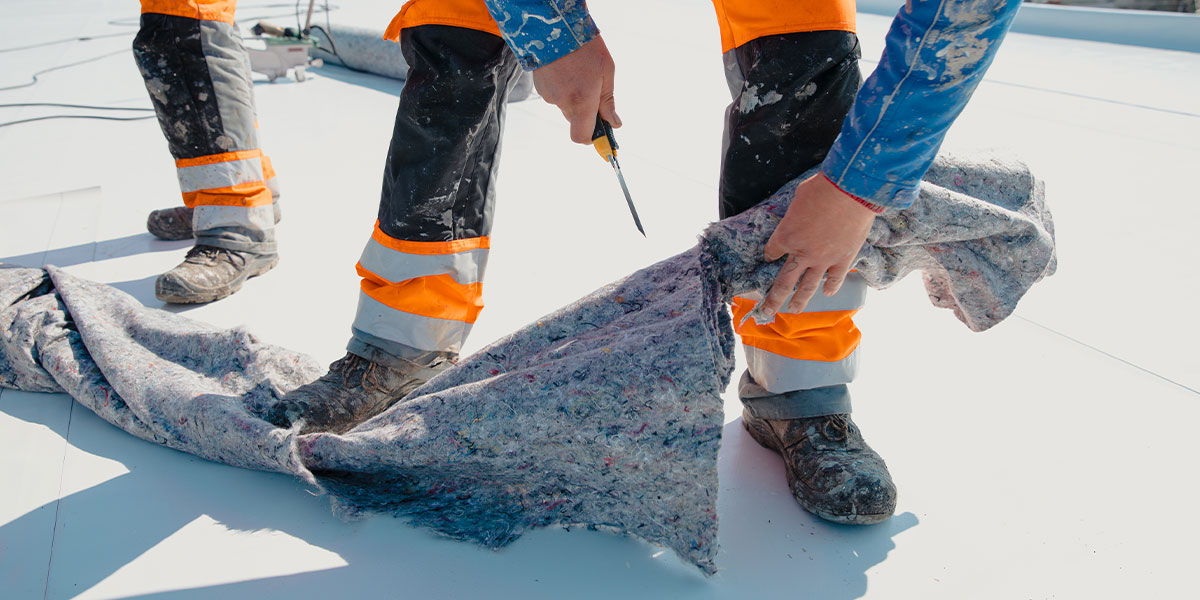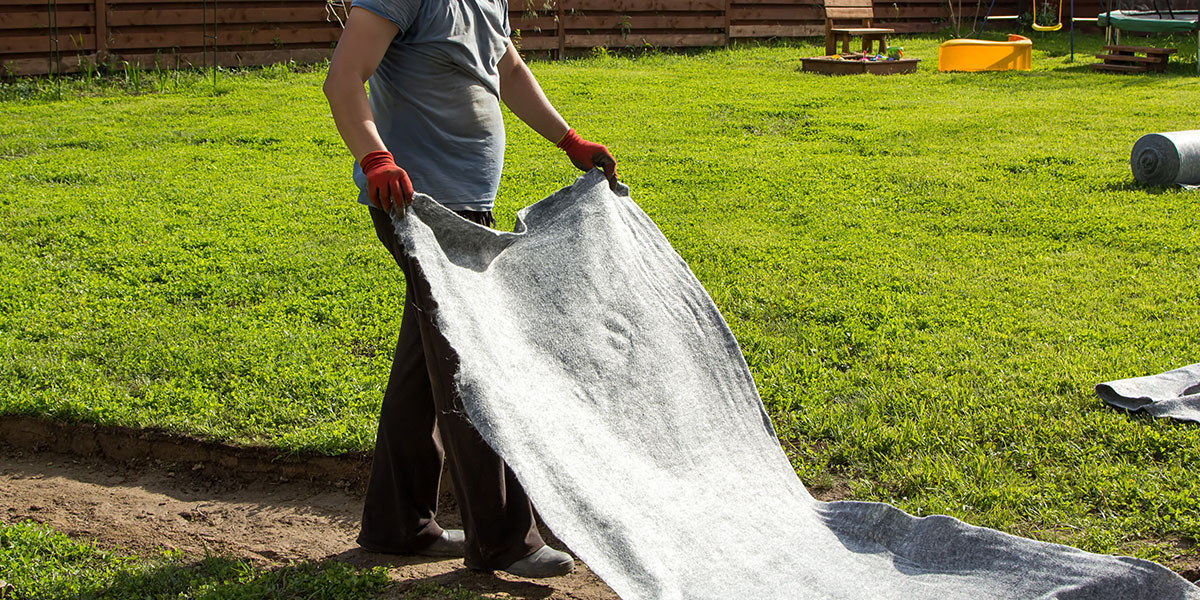Geotextiles are extremely useful materials with a wide range of applications, from soil engineering in construction and infrastructure projects to landscape design. These fabric-like materials, which enhance soil stability, regulate water flow, and prevent soil erosion, must be used correctly. In this article, we will provide a step-by-step guide to the proper installation of geotextile materials and offer information on the different types of geotextiles.
What is Geotextile?
Geotextile is a material made from natural or synthetic fabrics, commonly used in fields such as construction, road construction, and environmental engineering. Geotextiles interact with the soil to perform various functions, such as enabling drainage, preventing soil erosion, and enhancing soil stability. Geotextiles generally come in three main types: drainage, separation, and reinforcement geotextiles.

Step 1: Choosing the Right Geotextile
The first and most important step in geotextile installation is selecting the appropriate type of material. The characteristics of geotextiles should be chosen based on the purpose of installation and environmental conditions. There are three primary types of geotextiles:
a. Separation Geotextile
This type of geotextile is used to prevent the mixing of two different materials. For example, it helps maintain long-term soil stability by preventing the mixing of gravel and soil.
b. Drainage Geotextile
Drainage geotextiles allow the passage of water while preventing the movement of soil, sand, and similar materials. These geotextiles are commonly used to prevent water accumulation and ensure the proper flow of water beneath the surface.
c. Reinforcement Geotextile
Reinforcement geotextiles are used to strengthen the ground structures and increase load-bearing capacity. They are typically used in areas with weak soils to improve the foundational load-bearing capacity.
When choosing a geotextile type, evaluate the soil structure, water conditions, and project requirements of the area where it will be installed.
Step 2: Preparing the Ground
One of the most critical steps in geotextile installation is properly preparing the ground surface. The ground should be smooth, and large stones, roots, and other foreign objects should be removed. Additionally, the slope of the surface should be adjusted, as it can affect water drainage.
- Site Cleaning: Ensure that sharp stones, large rocks, roots, and other foreign materials are not present on the surface. These obstacles can damage the geotextile or prevent it from functioning properly.
- Smooth Surface: The surface should be leveled to ensure the proper placement of the geotextile. Additionally, the slope of the surface should be designed to direct water in the correct manner.
Step 3: Placing the Geotextile
Correct placement of the geotextile is crucial for the success of the project. Some important points to consider when placing the geotextile are:
- Placing on Vertical Surfaces: Geotextiles should be placed horizontally when possible. If the geotextile is to be used on a vertical surface, appropriate support systems should be used to prevent the fabric from slipping.
- Seams and Connections: When the geotextile fabric needs to be joined, the correct stitching techniques should be employed. The seams should be durable enough to prevent the material from separating over time. The frequency and alignment of the stitches are also important.
- Tight Placement: Once placed, the geotextile fabric should be installed tightly. There should be no wrinkles, folds, or slack in the material. Otherwise, the fabric may shift or fail to perform as intended over time.
Step 4: Adding Upper Layers
After the geotextile is laid, appropriate material layers should be added on top. For example, in road construction, materials that increase stability can be placed on top of the geotextile fabric. Correct placement of the upper layers is important for the proper functioning of the geotextile.
- Soil Layers: The soil or sand placed over the geotextile should be evenly distributed without disturbing the function of the geotextile material.
- Stone and Aggregate Layers: If the project involves road construction or stone filling, stone or aggregate layers should be evenly spread over the geotextile fabric.

Step 5: Surface Application and Inspection
After the geotextile installation, the entire area should be inspected to ensure that the material has been placed correctly. Any damage, loosening, or shifting of the geotextile should be observed, and corrections should be made if necessary.
- Damage Inspection: The geotextile fabric should not be damaged during the installation process. Damaged areas may cause the material to lose its functionality, which could compromise the success of the project.
- Placement Inspection: The geotextile material should be checked frequently to ensure that it is placed properly. If any shifting or loosening is detected, the material may need to be repositioned.
Geotextile is an important material that directly affects the success of infrastructure projects. It needs to be correctly selected and properly installed. Steps such as ground preparation, selecting the right geotextile material, placing it correctly, and adding upper layers are critical to a successful installation. By choosing the appropriate type of geotextile for your project and following the correct installation steps, you will contribute to building durable and stable structures in the long term.


